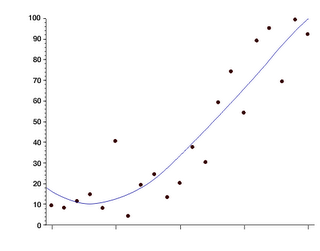Here's one example of a recurring scenario that I see: Multiple Variant Processes to Perform a Common Function. In a large organization with multiple subsidiaries, there are often common functions that each of those subsidiaries perform but with their own slightly unique processes for doing so. For example, a lot of large organizations have subsidiaries that have their own unique processes for procurement. Often times the parent organization will want to integrate with the processes of the subsidiaries or it will want to integrate the subsidiaries’ processes together. So how do you go about analyzing all the subsidiaries’ processes to figure what/where to integrate? This can be pretty overwhelming if there are a lot of subsidiaries and the processes are complex.
An effective way to analyze the variant processes is to abstract a common process out of them. This is analogous to extracting a trend line from a scatter plot graph. In a scatter plot, trying to look at the individual points to understand and draw relationships out of the data is very difficult, thus, you generate a common trend line out of those points.
 With process analysis, it is very easy to get caught up in all the details of the individual processes and lose sight of the relationships across the processes that are important for integration. Thus, you should abstract a common process out of the individual processes and use that common process to direct your analysis of the individual processes.
With process analysis, it is very easy to get caught up in all the details of the individual processes and lose sight of the relationships across the processes that are important for integration. Thus, you should abstract a common process out of the individual processes and use that common process to direct your analysis of the individual processes.
soa, patterns, bpm




No comments:
Post a Comment